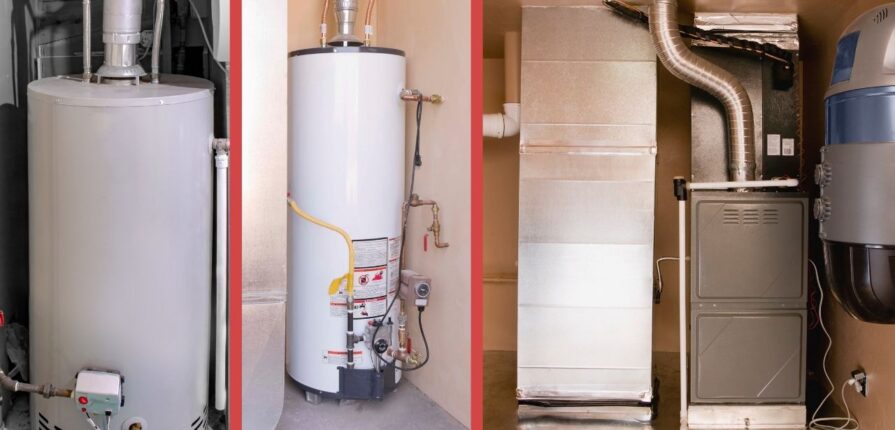Heating systems are essential for maintaining comfortable indoor temperatures, especially in colder climates. There are several types of heating systems, each suited for different needs, spaces, and budgets. Here’s an overview:
Types of Heating Systems:
1. Furnaces (Forced Air Systems)
- How It Works:
Uses a central furnace to heat air and distribute it through ductwork and vents. - Fuel Types: Natural gas, propane, oil, or electricity.
- Pros:
- Quick heating.
- Can be combined with air conditioning for year-round climate control.
- Cons:
- Ductwork can leak, reducing efficiency.
- May stir up allergens.
2. Boilers (Radiant Heating Systems)
- How It Works:
Heats water and distributes it through pipes to radiators or underfloor heating systems. - Fuel Types: Natural gas, oil, or electricity.
- Pros:
- Provides consistent, even heating.
- Quieter than forced air systems.
- Cons:
- Slower to heat up.
- More expensive to install.
3. Heat Pumps
- How It Works:
Transfers heat from outside air, ground, or water sources into your home. Works as both a heater and air conditioner. - Types: Air-source, ground-source (geothermal), and water-source.
- Pros:
- Energy-efficient.
- Environmentally friendly.
- Cons:
- Initial installation can be costly.
- Less effective in extremely cold climates (unless a cold-climate model is used).
4. Electric Heating Systems
- How It Works:
Converts electricity directly into heat through baseboard heaters, radiant panels, or space heaters. - Pros:
- Easy to install.
- Ideal for small spaces or supplemental heating.
- Cons:
- Higher operational costs in areas with expensive electricity.
5. Radiant Floor Heating
- How It Works:
Uses hot water pipes or electric heating mats embedded under the floor. - Pros:
- Even heating.
- Silent operation.
- Cons:
- Expensive and labor-intensive installation.
6. Wood, Pellet, or Gas Stoves
- How It Works:
Burns wood, pellets, or gas to generate heat in a single room or small area. - Pros:
- Cozy aesthetic.
- Cost-effective in rural areas with abundant wood supply.
- Cons:
- Requires frequent maintenance and cleaning.
- Limited to smaller spaces.
Factors to Consider When Choosing a Heating System:
- Climate: Heat pumps might be ideal for mild climates, while boilers or furnaces suit colder regions.
- Energy Efficiency: Look for high-efficiency systems with ENERGY STAR ratings.
- Installation Costs: Initial setup costs can vary significantly based on the type of system.
- Operating Costs: Consider long-term fuel or electricity expenses.
- Home Size and Layout: Larger homes may benefit from centralized systems, while smaller spaces might do well with electric or radiant heating.



Recent Comments